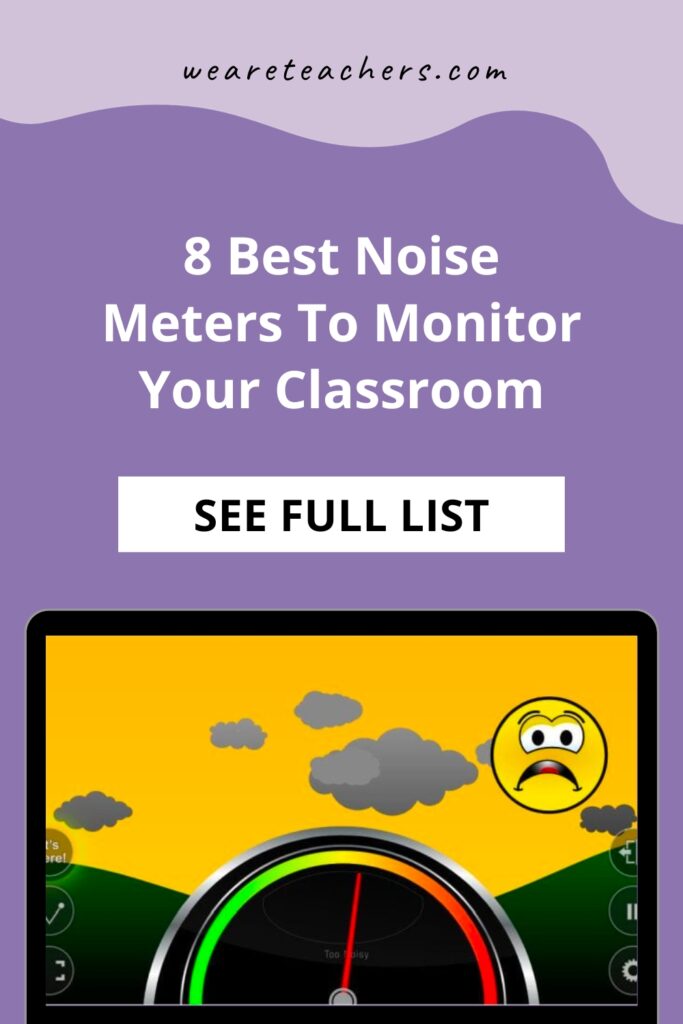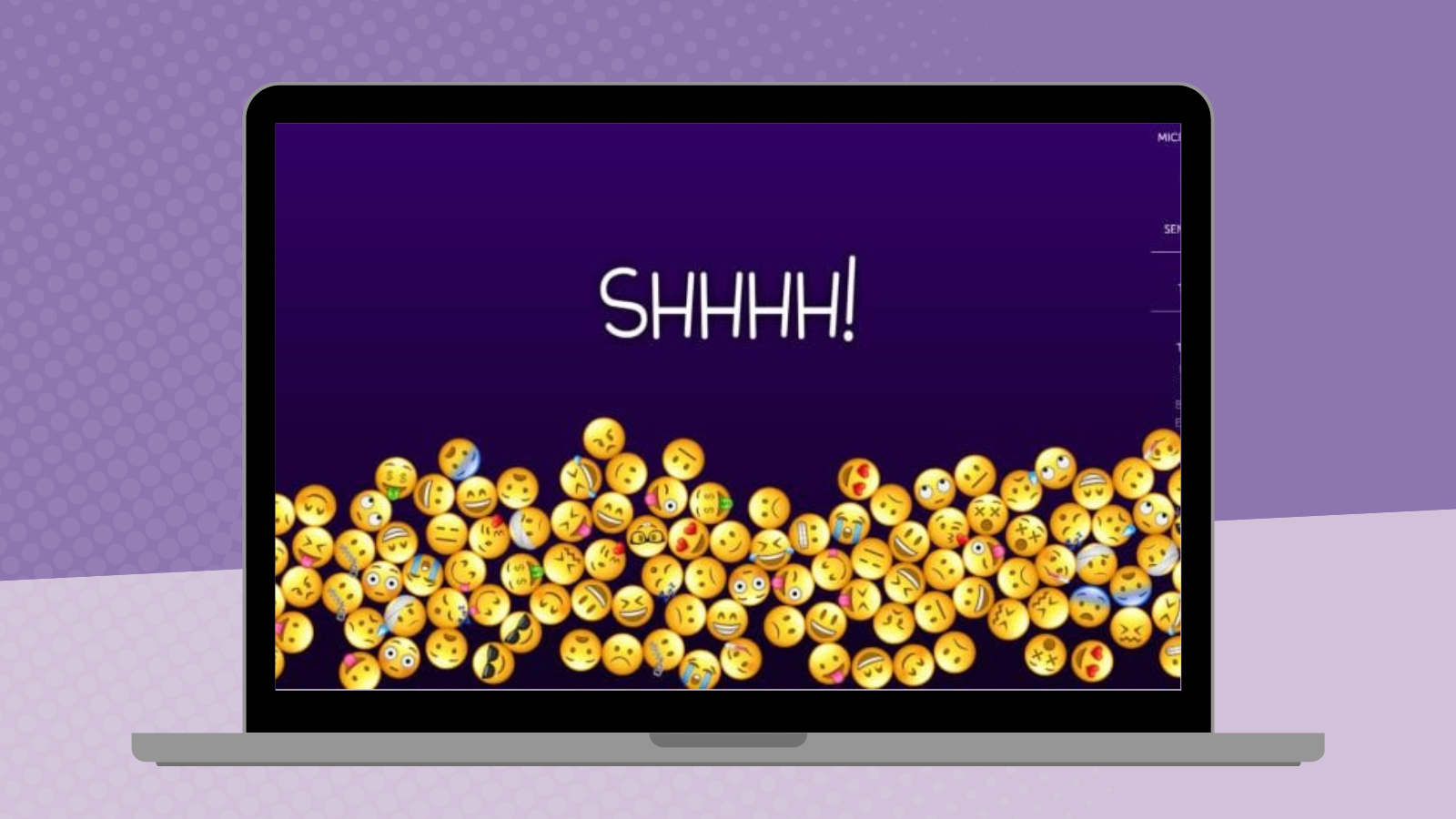Teachers have all sorts of strategies for managing classroom noise, and classroom noise meters are one more item to add to your bag of tricks. These use the microphone on your computer to let kids know when their sound level is appropriate and when it’s just too much. We’ve rounded up eight of the best noise meters, and all of them are free and easy to use with your classroom computer and projector.
Tips for Using Classroom Noise Monitor Apps
- Talk about noise meters and how they work with your class in advance. Let them know what your expectations are and what the consequences of being too loud will be.
- Kids are naturally going to want to see what happens on the app if they’re too noisy. Give them a chance to do one good noise burst and get it out of their system at the beginning. (This is useful for calibrating the apps too.)
- Try using a few different classroom noise meters in rotation to keep kids interested. Otherwise, the app will just become part of the background in the classroom, and it won’t work if kids ignore it.
1. Calm Counter
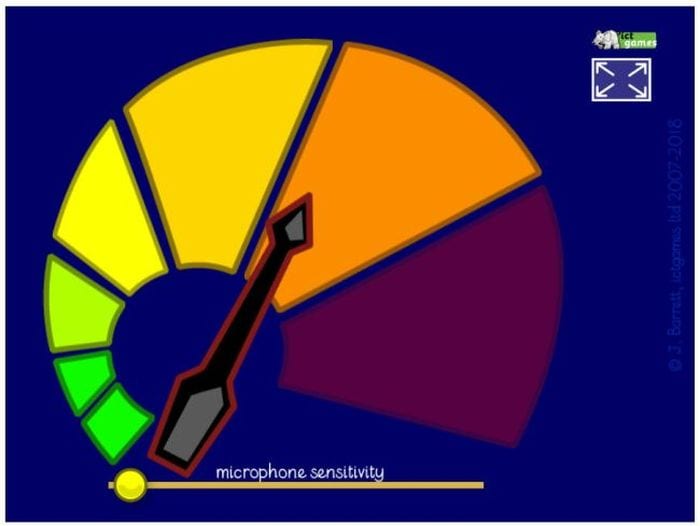
How it works: This simple noise level meter shows noise levels from green (good) to red (bad). The only setting you need to worry about is the microphone sensitivity.
Cool features: Calm Counter doesn’t have any fancy bells and whistles, and that can be a good thing. It’s extremely easy to use and the visual display makes it simple for kids to see when they’re being too noisy.
Try it: Head to the Calm Counter website, and the meter starts automatically. Adjust the microphone sensitivity as needed.
2. Classcraft Classroom Noise Level Meter
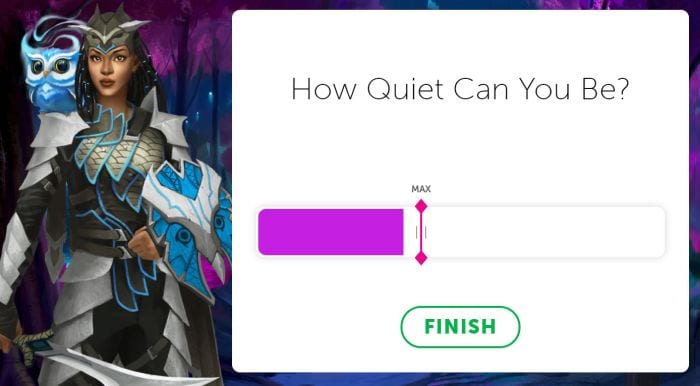
How it works: A volume meter appears on the screen, changing to reflect the amount of noise in the classroom. If the noise crosses the max line, a pop-up on the screen states that you’ve been too loud. There’s no audible alert, only the visual warning.
Cool features: You can set a timer at the beginning if you like, turning this into a game to see if you can find the buried treasure without any noise violations.
Try it: Head to the Classcraft website and click Try It Now. Set the timer, or click the X button to skip it. Set your max volume and click Start.
3. Zero Noise Classroom by Google Chrome
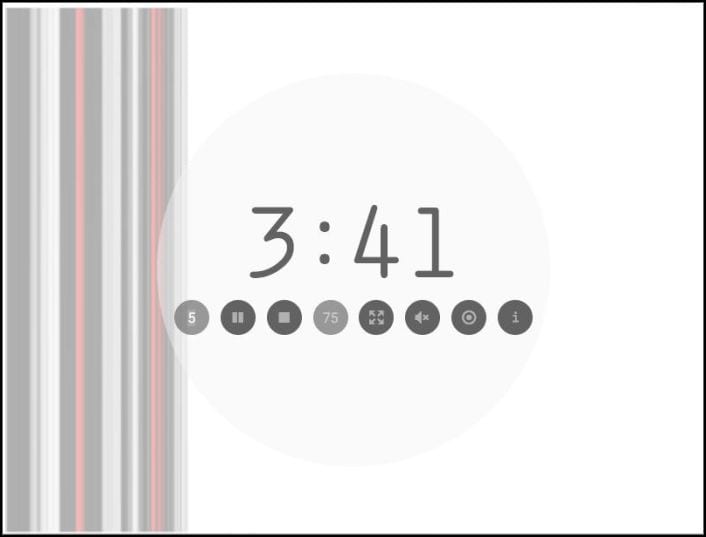
How it works: You set a timer for this classroom noise monitor, and current sound levels appear in the background as it runs. Light shades indicate quiet, while darker gray means the classroom has gotten louder. When a red stripe displays, it means the noise has passed the maximum level (there’s no audible alert).
Cool features: Because this classroom noise monitor displays the “noise history” from start to finish, it’s a fun way to see just how often a class is passing the “noisy” threshold. Try it as a challenge: If a class can finish 30 minutes of group work without hitting the red a single time, they earn a prize.
Try it: Zero Noise Classroom is a Chrome extension, so you’ll need to use the Chrome browser. Click here to visit the Chrome web store and install the extension. Then click Launch App, choose your settings (hover over the icons for more information on each), and click the start arrow to begin.
4. Too Noisy Lite
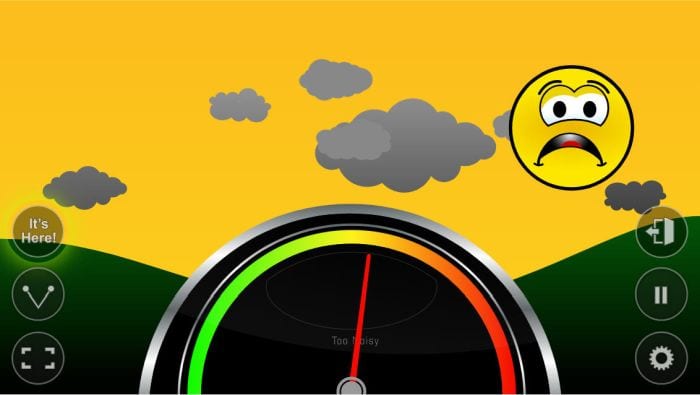
How it works: The noise meter at the bottom is reflected in the color of the sky and the emoji above. It changes from happy blue sky to dark clouds as the noise increases.
Cool features: The free version of this classroom noise monitor app is simple and effective. If you’d like to activate more features, you can download the paid version on your phone or tablet. There’s also an online Pro version with plenty of extras for a monthly fee.
Try it: Register with EdTech Monster to receive free access to Too Noisy Lite. Once you’re signed in, the meter starts automatically. We recommend using the Calibrate button in the Microphone settings menu for best results.
5. Quiet Classroom
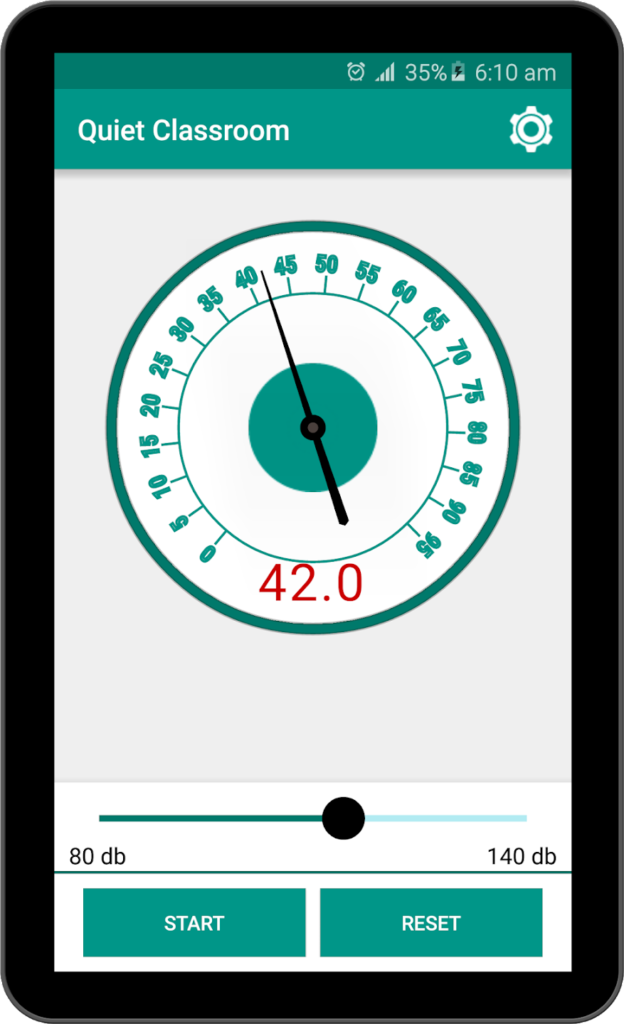
How it works: Quiet Classroom from FunDip is simple to use. Just select an acceptable noise level (from 0 to 95 db). Next, choose an alert sound (school bell, warning bell, or high-pitched intruder bell). Then just push the start button. When the classroom noise level rises above the preset level, the alert will sound.
Cool features: The easy-to-read visual display lets students know what level they are on at all times. The only drawback is the alarm does not go off when the noise level abates, so it needs to be reset manually.
Try it: Quiet Classroom from FunDip is available on Google Play.
6. Class Dojo Noise Meter
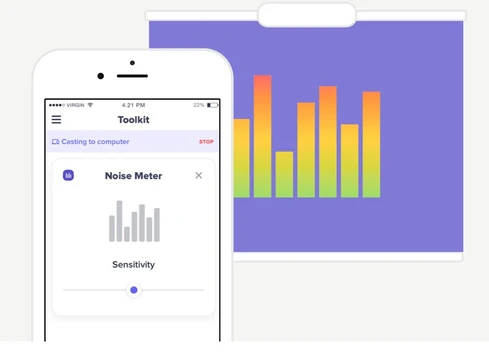
How it works: Class Dojo’s Noise Meter helps remind students what the appropriate volume should be in the classroom at specific times. The columns of the bar graph change in size and turn from green to yellow to red when the volume starts getting too high.
Cool features: The Noise Meter is simple to use, with customizable microphone sensitivity, fun animations, and remote control via your phone.
Try it: Log in to your ClassDojo account and click on Toolkit. Then select Noise Meter. Set a noise limit using the sensitivity bar, turn on the microphone of your device, and you’re ready to go.
7. Noise ‘O’ Meter
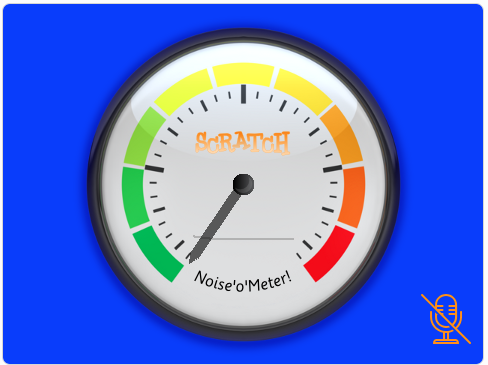
How it works: This is basically a coding project created using the popular coding platform Scratch. To start using Noise’O’Meter, you need to turn on your computer’s microphone. Noise’O’Meter takes the shape of a clock with a single hand that moves clockwise according to the noise level. The tool uses a color intensity system to tag noise levels starting with low levels (green) all the way to highest noise levels (red).
Cool features: Since Scratch is a collaborative community-based coding platform, members of the community have used Noise’O Meter in their own projects creating what is known in Scratch lingo as Remixes. You can find these remixed projects on the right-hand side within the tool’s home page.
Try it: Simply visit the Noise’O’Meter website and allow the program access to your microphone.
8. Bouncy Balls
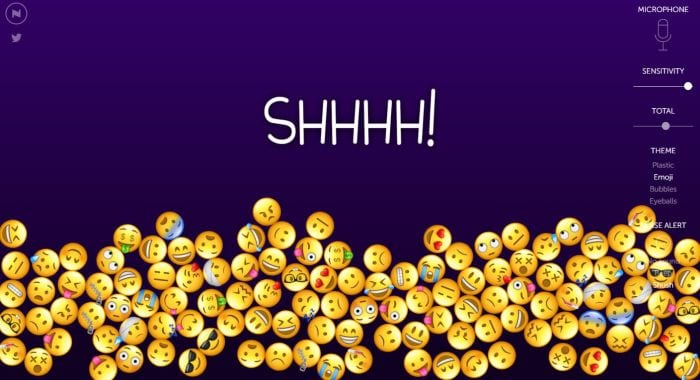
How it works: The louder the classroom, the higher the balls fly! The goal is to keep the balls hanging out at the bottom. When the noise level rises too high, the program will alert students with a “Shh!” or loud beep—you choose.
Cool features: You can change the balls to bubbles, emojis, or even eyeballs! This is also the only free classroom noise meter that has an audible alarm when kids pass the noise threshold.
Try it: Visit the Bouncy Balls website and click Begin Bouncing on the home page. Then choose your settings and click the microphone icon in the top right corner to begin.
Which classroom noise meters do you think are the best? Come chat with other teachers on the We Are Teachers HELPLINE Facebook group for advice.
Have you tried the magic of a classroom doorbell yet? Here’s why a classroom doorbell may be your favorite purchase ever!
